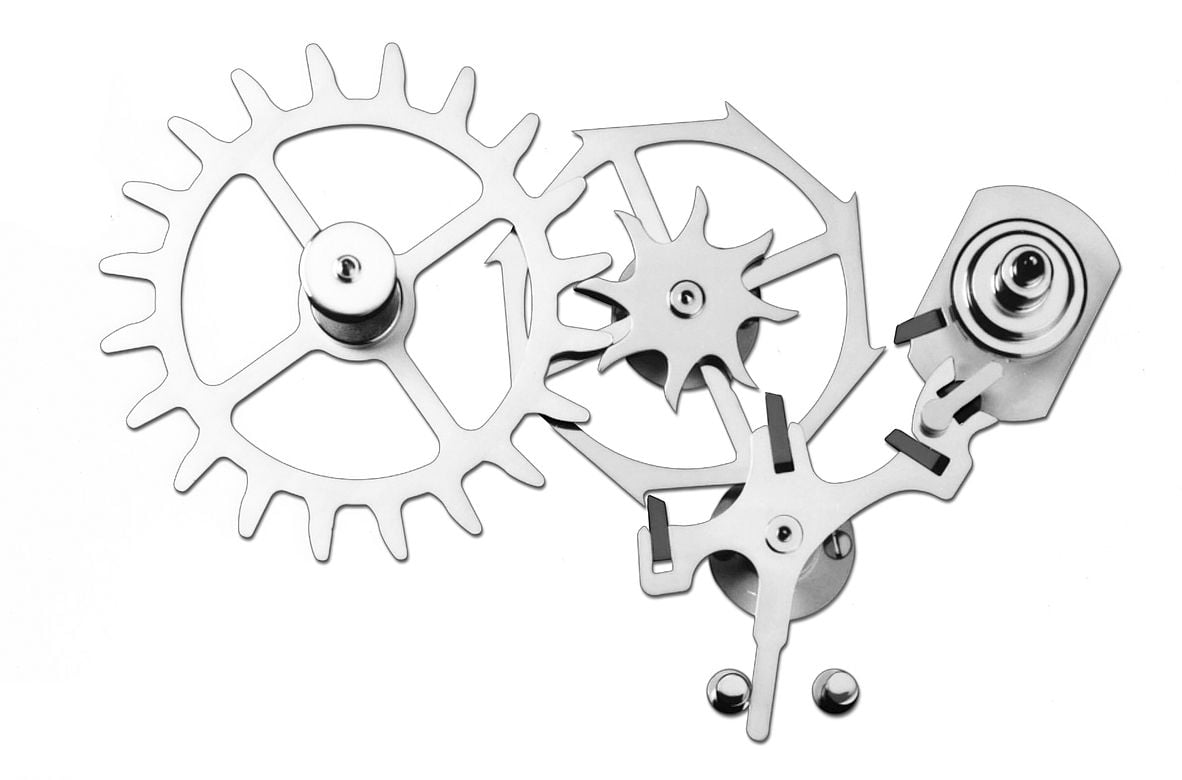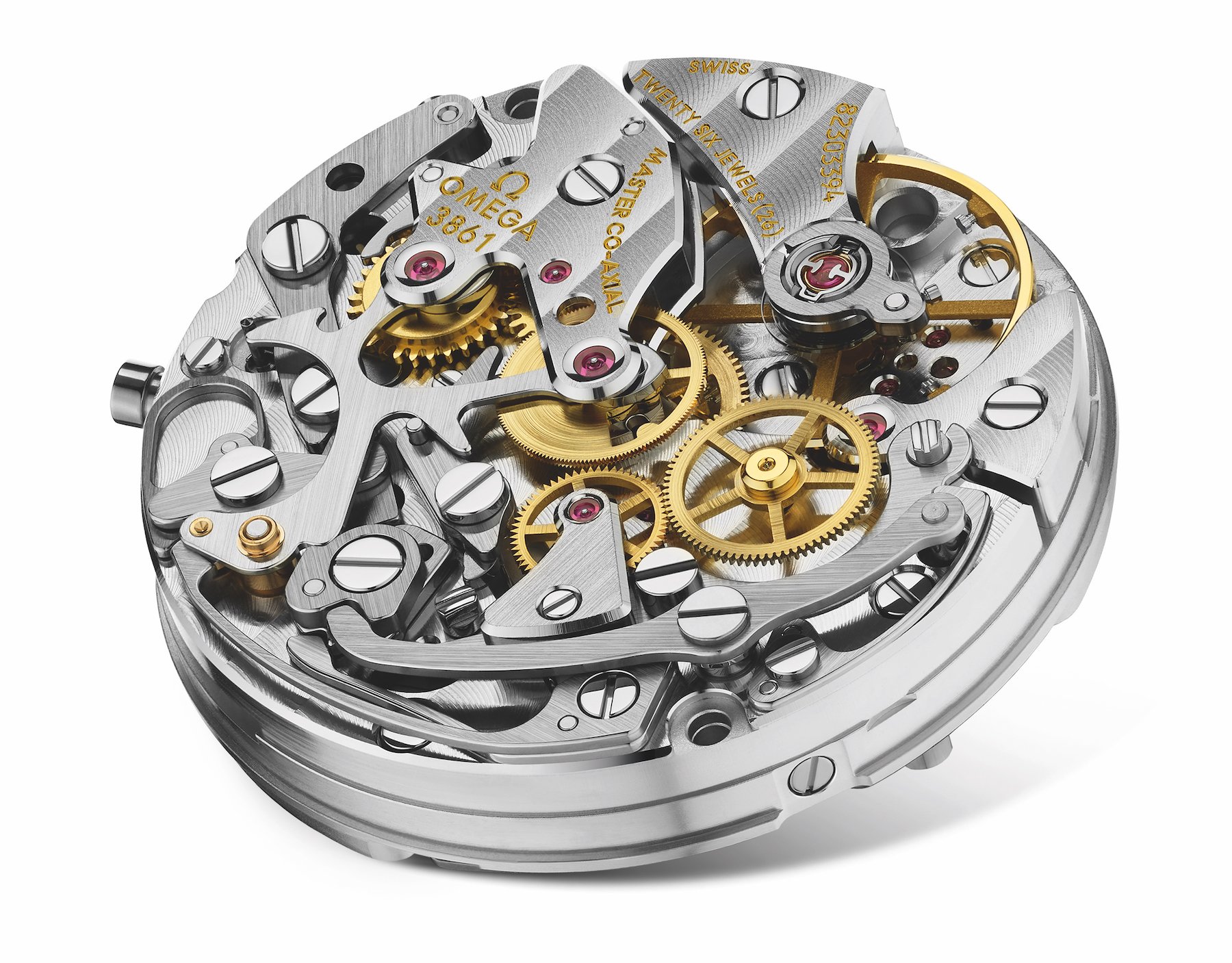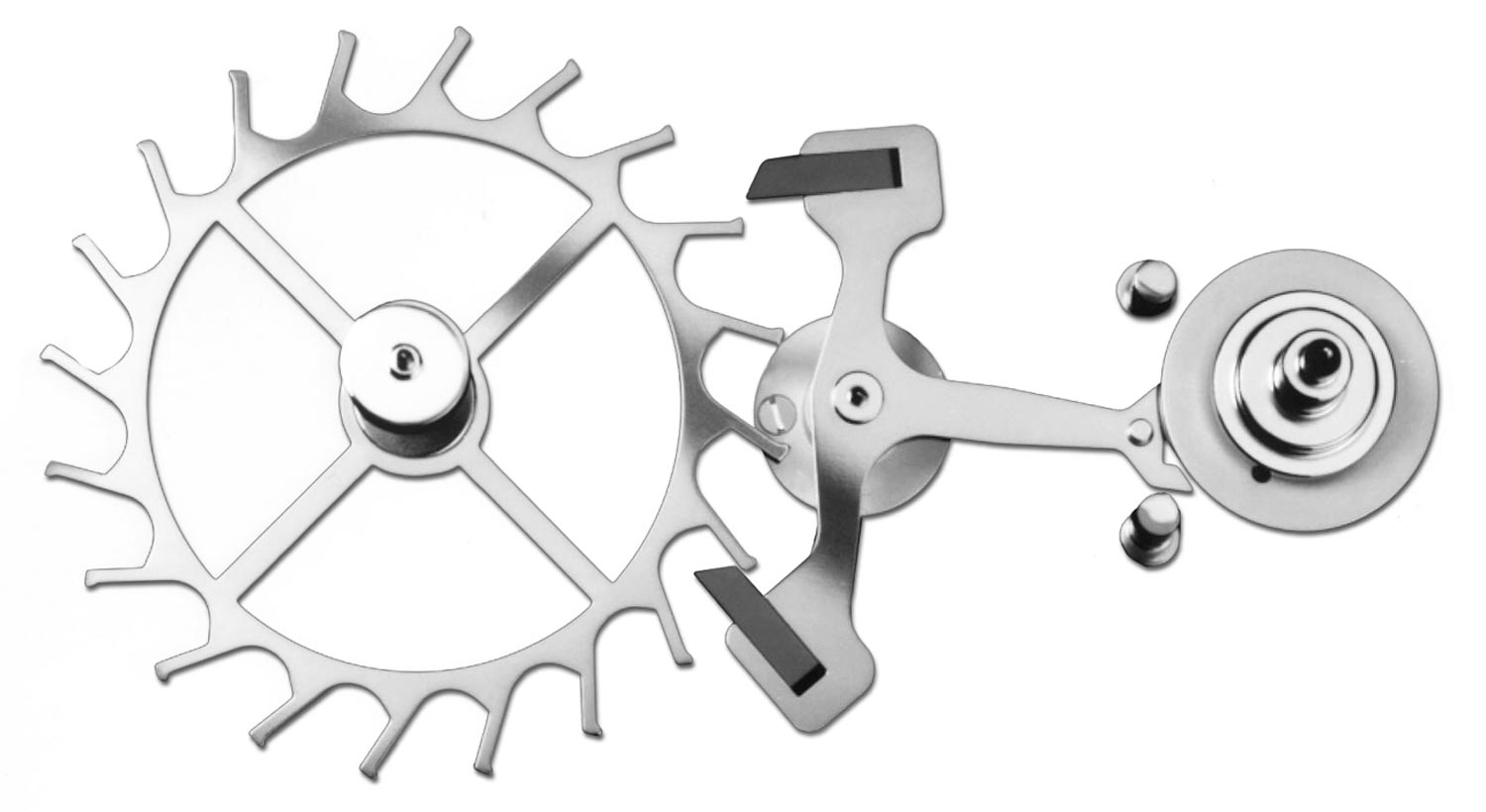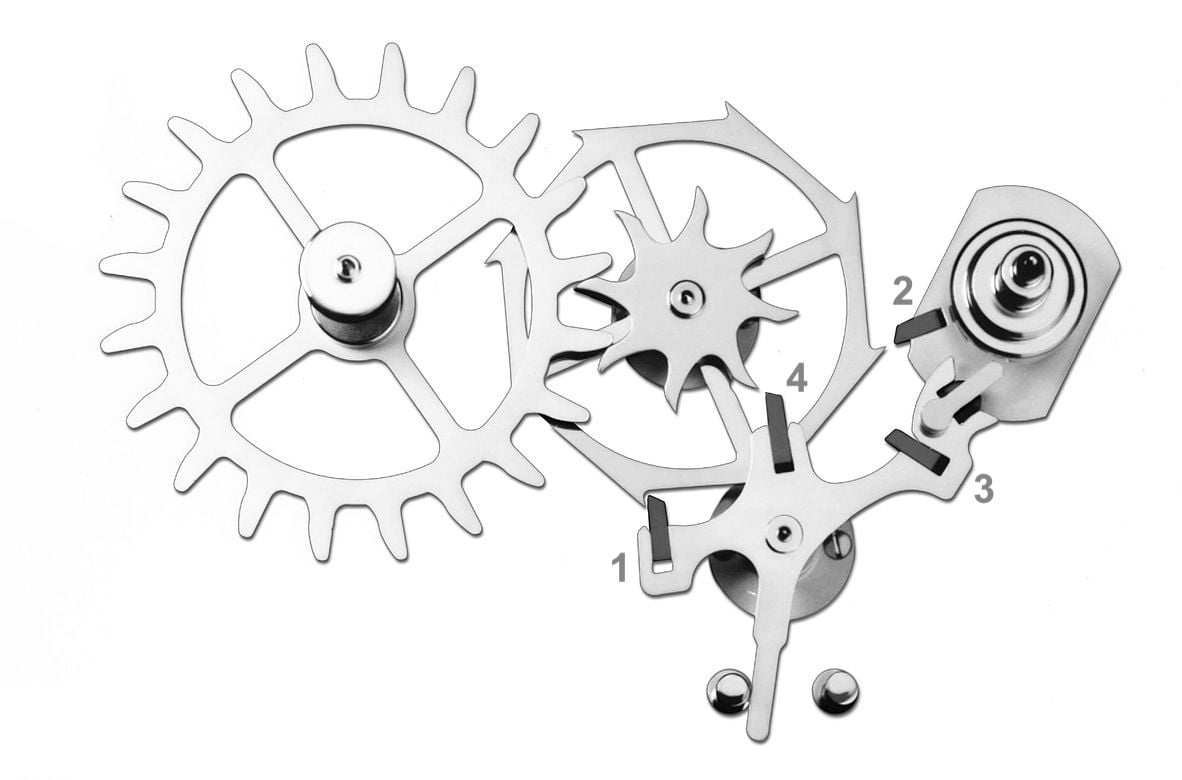Everything You Need to Know About the OMEGA Co-Axial Escapement
The ultimate video/guide to Omega's game-changing escapement.
Back in the mid-1990s, the watch industry was very different from what it is today and mechanical watchmaking was still in its renaissance. Very few watch brands actually manufactured movements in-house, and even fewer brands had the ability or industrial capacity to reimagine the escapement and the oscillator, together called the regulating organ and these are the most crucial part of a watch. With the idea of improving the century-old Swiss lever escapement (developed in 1755 by Thomas Mudge and used in 99.9% of all movements), master watchmaker George Daniels developed the Co-Axial escapement, an innovation that OMEGA realised was groundbreaking. Understanding the importance of chronometry, a field in which OMEGA has achieved multiple records, the Biel-based brand took on Daniels’ idea and industrialised the Co-Axial concept. It would become a key element in the impressive precision of its watches and paved the way for OMEGA’s Master Chronometer certification. Today, MONOCHROME presents its latest in-depth movie, a borderline educational film that will explain everything you need to know about the OMEGA Co-Axial escapement.
The escapement is one of the most crucial parts of a mechanical watch. It is its brain. It gradually releases the energy of the mainspring. It works in conjunction with the oscillator, giving impulses to power it. In return, it is regulated by the oscillator. Its role is critical in the quest for greater precision, stability and durability in a watch movement.

Still today – and even more so a couple of decades ago – the Swiss lever escapement has been the norm for mechanical watches. It is used in 99% of Swiss and international movement production. The lever escapement was invented some 250 years ago by Thomas Mudge. Although it has been adopted universally, it has one fundamental flaw: it requires oil. Its sliding friction makes optimal lubrication crucial. The problem with lubricants (oil) is that they deteriorate over time compromising the stability of watch rates. In recent years, we’ve seen plenty of new escapement architectures unveiled by brands; however, most of them are produced on a small scale, and the lever escapement remains the only architecture produced at an industrial scale… Until OMEGA changed this in the late 1990s with the Co-Axial escapement.

Some 50 years ago, one of the world’s most revered watchmakers, George Daniels, decided to question the uncontested pre-eminence of the lever escapement. Daniels knew there was room for improvement, mostly by reducing friction and offering better stability over time. His solution – at this stage still a prototype and a superb piece of horological ingenuity – was the Co-Axial escapement. Still today, his brainchild is the only ‘other’ escapement produced on an industrial scale along with the Swiss lever escapement.
Despite the ingenuity and proven results of the Co-Axial escapement, getting it into production wasn’t easy. Daniels travelled to Switzerland on countless occasions to present his invention to several brands. Unfortunately, the watch industry was facing the quartz revolution, which was celebrated as the future of watchmaking. As clever as his idea was, it hardly resonated in the watch industry. Still, Daniels persevered.

The first application of the Co-Axial escapement in a wristwatch dates back to 1974/1975 when George Daniels hand-produced the components to fit his Co-Axial escapement into the calibre 1045 of his personal Omega Speedmaster Mark 4.5 – a piece of watchmaking history, now exhibited at the Omega Museum in Biel. He made a second wristwatch prototype (a thinner wristwatch), and again, he presented it to several of the most prominent Swiss brands. Still, it wasn’t until the early 1990s when Daniels would find support and an optimal framework to develop and industrialise his escapement with OMEGA, a brand that has countless records in the field of chronometry (as explained in the history part of our movie). However, the ultimate determining factor of this success came down to the personal backing of Nicolas G. Hayek, Chairman of Omega’s parent company, Swatch Group.
And in 1999, OMEGA finally commercialised the first watch equipped with a Co-Axial escapement, marking a milestone in watchmaking history.
How Co-Axial works?
As you’ll see in the video (at about 6min 45sec), the functioning of the Co-Axial is perfectly explained by Gregory Kissling, Head of Product Development at OMEGA. The two functions of all escapements, Swiss lever or Co-Axial, are to lock and unlock the gear train and receive and transmit impulses from the balance.
In the Swiss lever escapement, both pallets have to perform the lock/unlock and impulse functions. This implies a great deal of friction on the teeth of the escape wheel and the pallets of the fork, and thus the need for lubrication. As mentioned, the main problem comes from the stability of oils, which deteriorate over time compromising the rate of the watch. In addition to that, friction has an impact on the efficiency of the movement, which consumes more energy.
The conception of the Co-Axial escapement is complex but solves the issue of friction, reducing it dramatically. Instead of 2 pallets, it features 5 rubies – 4 pallets and 1 impulse ruby. The genius of Co-Axial has been to divide the two functions of the escapement, distributing them over 4 pallets instead of 2.
As shown above, pallets 1 and 3 are responsible for locking and unlocking the gear train. The other two pallets, number 4 and number 2, receive and transmit the impulses to the regulating organ through the balance work. Thanks to this complex but ingenious concept, friction is reduced tremendously thanks to a much smaller contact on the pallets. In real life, this means less wear and tear on the parts and a reduced need for lubrication. As such, the OMEGA Co-Axial escapement remains accurate for a much longer period, reducing the need for service operations; service intervals have been extended to seven or eight years on watches with Co-Axial escapement.

In 2007, OMEGA presented the calibre 8500, the first movement entirely produced in-house by the brand equipped with the Co-Axial escapement. And in 2013, OMEGA developed the first-ever fully anti-magnetic movement, capable of resisting magnetic fields of up to 15,000-gauss. Although the Co-Axial escapement architecture remained the same, it was upgraded with new materials: silicon for the hairspring; amorphous alloy for the shock absorber; plates for the Co-Axial escapement made with LIGA technology in nickel-phosphorus; and Nivagauss alloy for the staffs.
Combining the groundbreaking Co-Axial escapement with the movement’s anti-magnetic properties has been a key element in OMEGA’s path to creating its own in-house Master Chronometer certification. OMEGA is the only brand that has achieved such a level of integration for an ‘exotic’ escapement, and that is something that has to be applauded

All the details regarding history, working principle, advantages over the Swiss lever escapement, technical perspective, evolution, impact on the ability of OMEGA to develop the Master Chronometer certification, the influence of George Daniels, and all the watches that have made this technology a hallmark of OMEGA’s recent success… everything is in the in-depth video above, as well as on our YouTube channel here, explained by Raynald Aeschlimann, President and CEO of OMEGA, Petros Protopapas, Head of Brand Heritage, Gregory Kissling, Head of Product Development, Jean-Claude Monachon, Vice-President Product & Customer Service, and our own Frank Geelen, founder of MONOCHROME.
For more details, please visit omegawatches.com.









3 responses
Fabulous technology, I am just waiting for Omega to make a watch that appeals to me from an aesthetic point of view, has to happen sooner or later.
I have a co-axel Omega GMT divers watch that has been repaired. The repairs were costly. However, when the hour hand arrives at hour ten, it remains at the ten marker position and won’t advance yet the second hand continues to rotate. The only way to move the hour hand is to move it manually to the eleven marker. Once the hour hand is rotated to the eleven hour marker, the watch works perfect until the hour hand arrives at the ten marker position.
There are other Omega watches I have interest in, however, I’m spooked by the alleged great attributes of a co-axel movement claims.
Last:
I am the original owner of the watch which was purchased at the Omega store I Zurich, Switzerland. The reason I had the watch serviced, after two years, my great Co-Axel Omega GMT Divers watch stopped working.
Thank you, most interesting.
Have always liked the brand.